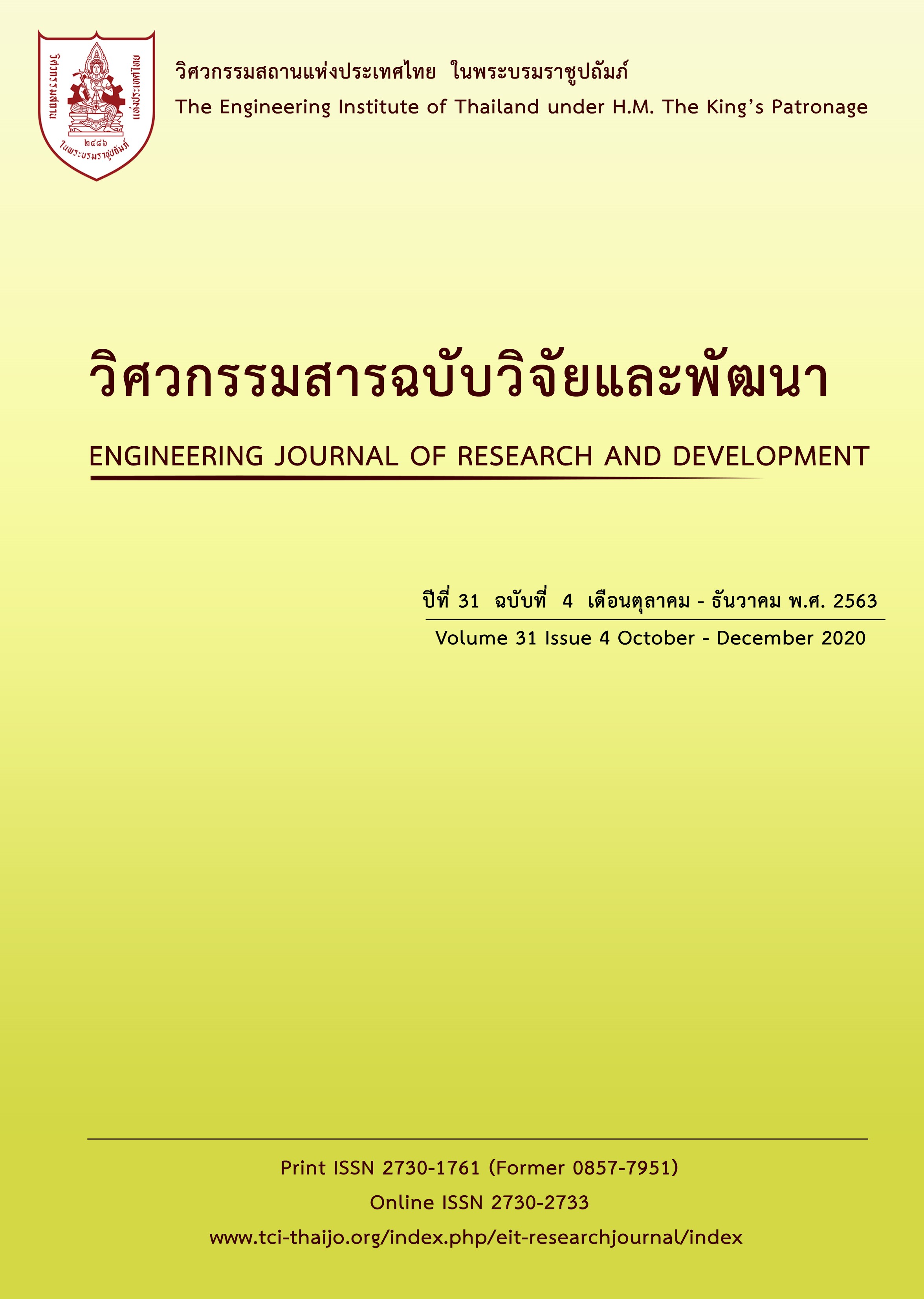EFFICIENCY OF CONCRETE REPAIR BY STITCHING DOGS METHOD WITH DIFFERENT MATERIALS
Main Article Content
Abstract
Cracks of taxiways and aprons causes subsiding due to water ingress into pavement. This affects the usability of the airport. There is a time limitation for repairing as it should be enabled as soon as possible. The objective of this research is to compare the efficiency of concrete repairing by Stitching Dogs by using 3 materials: Steel sheet 1 inch, thickness 3 millimeters, steel round bar diameter 6 millimeters and carbon fiber Reinforced Polymer (CFRP) strip by welding using epoxy. It was also compared with repair by epoxy only and with the original concrete that has not been repaired. The repair efficiency was determined by the flexural strength, water permeability and abrasion resistance. The test results showed that Stitching Dogs with Steel sheet 1 inch, thickness 3 millimeters will be the most effective, steel round bar diameter 6 millimeters and carbon fiber Reinforced Polymer (CFRP) respectively. The correlation between the abrasion resistance and the flexural strength was attained as the higher flexural strength was the higher abrasion resistance. However, it was not affecting the permeability because the size of the wound repairer was more affected on the permeability.
Article Details
The published articles are copyright of the Engineering Journal of Research and Development, The Engineering Institute of Thailand Under H.M. The King's Patronage (EIT).
References
[2] American Society for Testing and Materials. ASTM D5340-03: 2003.Standard Test Method for Airport Pavement Condition Index Surveys. 2003.
[3] James, D. C. Engineering and Design Evaluation and Repair of Concrete Structures, (EM 1110-2-2002), Washington DC: U.S. Army Corps of Engineers, 1995, pp.
6-21.
[4] กรมโยธาธิการและผังเมืองกระทรวงมหาดไทย, มาตรฐานปฏิบัติในการซ่อมแซมคอนกรีต, มยผ.1901-51, พ.ศ.2551
[5] American Society for Testing and Materials. ASTM C293-02: 2002. Standard Test Method for Flexural Strength of Concrete (Using Simple Beam With Center-
Point Loading). 2002.
[6] Japan Industrial Standard permeability test B. JIS A 6909: 1995. JIS Handbook 24-1, Architecture/Material Part, 764-765. 1995.
[7] S. Mindess, J.F. Young, and D. Darwin, Concrete, 2nd Edition, Pearson Education, Inc., Upper Saddle River, NJ. 2003, pp. 477-481
[8] American Society for Testing and Materials. ASTM C 779/C 779M: 1995. Standard Test Method for Abrasion Resistance of Horizontal Concrete Surfaces. 1995.
[9] Anilkumar P M, Dr. J Sudhakumar, Repairing Cracks in Concrete Structures. International Conference on Current Trends in Engineering Research, ICCTER.
2014, pp. 2-3
[10] Kejin Wang, Daniel C. Jansen, Surendra P. Shah, Alan F. Karr, The NSF Center for Advanced Cement-Based Materials. Permeability Study of Cracked
Concrete, 1997, pp. 1-13
[11] Jain.s E.McDonaId,TonyC.Liu. Repair of Concrete Surfaces Subjected to Abrasion Erosion Damage, Vicksburg: U.S. Army Engineer Waterways Experiment
Station, 1979, pp. 17.


